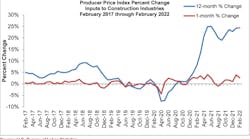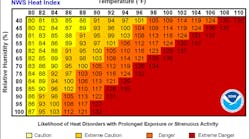When it comes to the environment, a number of pundits have pointed to the COVID-19 pandemic being the silver lining in the cloud.
They cite, as an example, the recent report in Nature Climate Change, in which researchers claim that by early April, daily global CO2 emissions had already dropped by 17 percent over last year. Countries with high vehicle usage, like the U.S. and the U.K., had even larger reductions in their emissions – 33 percent – due to reduced driving during the lockdown. Even with the gradual reopening we are now seeing across the U.S., that report projects a seven percent overall reduction in global emissions for the year.
However, climate scientist Corinne Le Quéré of the University of East Anglia, the lead author on the paper, is quick to point out that the largest, one day decrease in global CO2 emissions only returned us to 2006 levels. Clearly, politicians who routinely talk about zero emissions need to take heed. Permanent lockdown is not a viable mitigation strategy for climate change, which like COVID-19, is also a killer.
According to a new study by researchers at the Jet Propulsion Laboratory from the California Institute of Technology, Columbia University, and Loughborough University in the U.K., temperature and humidity measurements that were previously thought to be nearly nonexistent on Earth have been recorded. Published in Science Advances, their data found that heat-index – the apparent temperature that factors in both actual air temperature and relative humidity – readings of 115 deg. F. had doubled between 1979 and 2017.
More than a dozen readings from the Persian Gulf region were higher that the presumptive human tolerance limit of 35 deg. C. WB (>160 deg. F. heat-index), the highest wet bulb readings found in the scientific literature. Interestingly, the National Weather Service (NWS) heat-index chart tops out at 110 deg. F. And the NWS warns that on average, extreme heat has killed more people in the last 10 years than any other weather phenomena.
Finally, we know that air conditioning in hot, humid locales (like here in South Florida) is energy intensive and that high energy consumption translates to high carbon emissions. According to a 2018 report from the International Energy Agency, air conditioning is one the top drivers of global electric energy demand and is expected to triple by 2050.
Do not, however, follow the example of a department store in India. They elected to shutoff their AC during the pandemic lockdown, and the results were disastrous, especially for leather shoes!
###########
A regular contributor to HPAC Engineering and a member of its editorial advisory board, the author is a principal at Sustainable Performance Solutions LLC, a south Florida-based engineering firm focusing on energy and sustainability. Contact him at [email protected].










